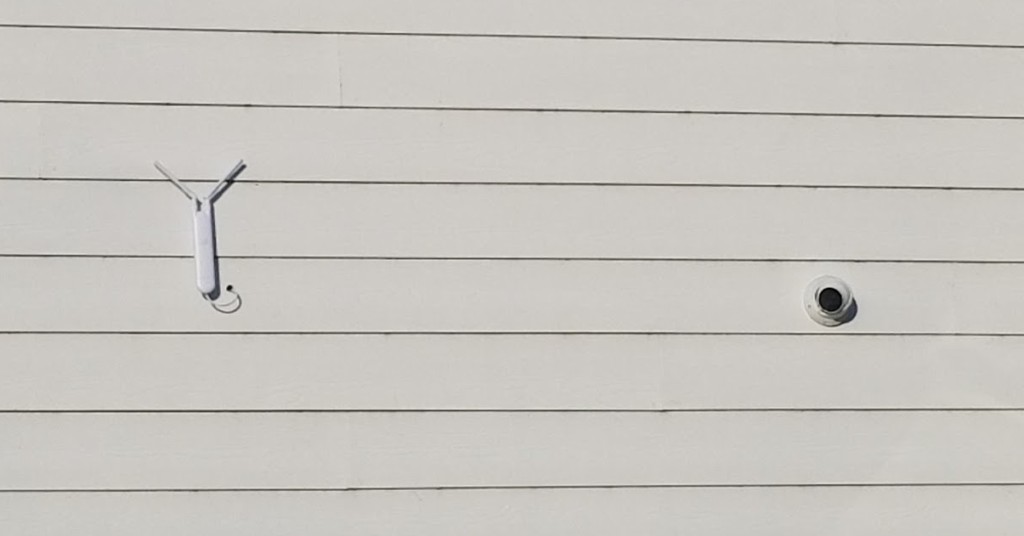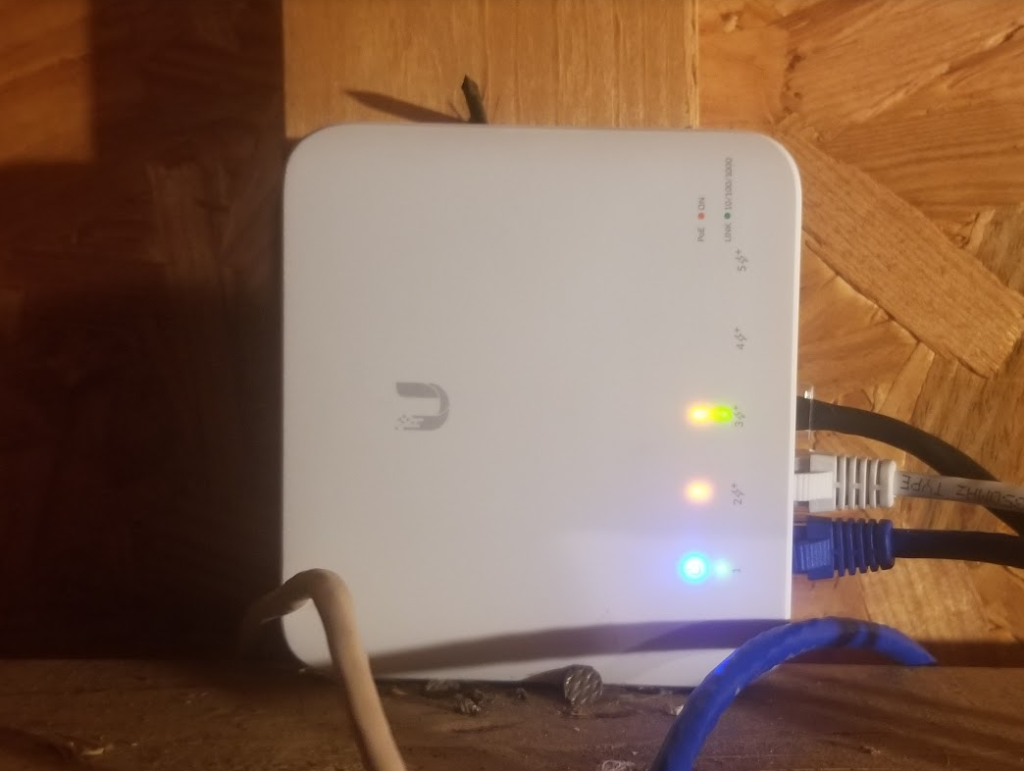I have mentioned the WiFi camera at our front gate before. It has come up in a discussion about the power system for it and in a mysterious DHCP flooding issue that was discovered when I began looking at router logs.
As it would turn out, the DHCP issue was because the camera would not usually hear the router. The conversation would basically be:
Camera: Hey, can I have this IP?
Router: Sure, sounds good to me.
Camera: Hey, can I have this IP?
Router: Sure, sounds good to me.
Camera: Hey, can I have this IP?
Router: Sure, sounds good to me.
Happily, the camera would default to the last IP it had and since the data was largely one way from camera to NAS, I didn’t really miss anything. Neither did it occur to me that the DHCP messages were a symptom of this one-sided communication, though it seems obvious to me now.
Once this occurred to me, I took some steps to address the problem. When I installed the ceiling mounted APs in the house, I had the wall mounted APs laying around. This model provides passthrough PoE, so I took it into the attic at the garage end of the house, closest to the gate camera. The driveway camera is PoE, so I reconfigured the cabling so that the cable powered the AP and the AP powered the camera. Then I reconnected the gate camera to WiFi and the attic AP was now a better signal than whichever one it had connected to before and the DHCP issue got better.
It did not go completely away, but now instead of DHCP requests several times per minute, all day, every day, it reduced to bursty, frequently everyday. I don’t know what made it work better sometimes than others, but it was definitely better.
I still wanted it to work correctly. I ordered an actual outdoor AP. I was going to quickly set it up for testing before permanently installing it and headed into the attic with it. I suddenly relized that the new AP doesn’t do the PoE passthrough as would be needed to have both the AP and the wired camera without running another CAT5 cable.
For the test, I connected the AP and even with it in the attic, the gate camera made only one DHCP request for the entire 30 minutes it was connected, which was definitely an improvement. I went ahead and drilled the hole and mounted the AP outside.
I had decided disconnect the wired camera for a day or two while I waited for the final piece of equipment to arrive, a USW-Flex switch. The USW-Flex is a 5 port switch that is both powered by PoE and provides PoE, within a reasonable power budget. As luck (and shipping) would have it, I had it the next day. It went in like a breeze.
The nails it is nestled between just happen to already be there and work perfectly to hold it in position where can see it lit up from the attic stairs.
The ports are limited to 25W max each and 46W total, at a temperature maxing out at 131F. The power ratings are reduced at higher temperatures. The high temperature range tops out at 149F and that range derates the maximum PoE power available to 25W. It seems obvious that Ubiquity expected these units to be deployed in attics where someone would use it like have to keep from running another CAT5 cable.
The AP and the camera each draw less that 5W each. I have two ports available for adding cameras as well. Assuming I stay with similar cameras, that seems likely.
Oh, and the gate camera does one DHCP renewal per hour, which is as it should be. And the frame rate increased.

